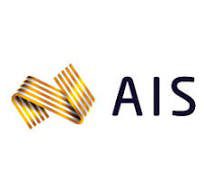Concussion & Return to Sport

Concussion and Return to Sport
Navigating Concussion Recovery: Your Path Back to Sport
Introduction
Concussions, often termed as ‘invisible injuries,’ are brain injuries resulting from impacts to the head or body. Understanding concussions is crucial, especially for athletes and sportspersons, as they significantly impact one’s health and performance. This article, informed by the latest research and a physiotherapist’s perspective, aims to guide individuals through the process of recognising, treating, and safely returning to sports post-concussion.

Concussions: What Are They?
Concussions are brain injuries characterised by a temporary loss of normal brain function. They occur when the brain is jolted inside the skull due to a blow to the head or body. Symptoms can vary greatly, making prompt and accurate diagnosis essential.
Latest Findings in Concussion Diagnosis
Recent advances in medical research have introduced innovative imaging techniques and protein tests that may revolutionize concussion diagnostics. However, these are still in experimental stages and not yet widely adopted in clinical practice.

New AIS Concussion Guidelines
The Australian Institute of Sport (AIS) has unveiled its 2024 guidelines for managing concussion, introducing stringent measures to safeguard athletes. A standout feature is the directive for a minimum 21-day hiatus from sport after a suspected concussion, emphasising the seriousness with which head injuries must be treated. Here’s a straightforward guide, especially for physiotherapists, on recognising symptoms, rehabilitating the athlete, and ensuring a safe return to sport, summed up by the principle “If in doubt, sit them out.”
Recognising Concussion Signs and Symptoms
Identifying a concussion is crucial, whether it’s right on the sidelines or within 48 hours post-injury. Immediate removal from play is essential upon suspicion, followed by a medical assessment between 72-96 hours after the incident. This assessment now involves the SCOAT6, an update from the SCAT5, to aid in diagnosing a concussion.
Some visual signs of concussion include (but are not limited to):
- Seizures
- Loss of consciousness or slow to get to feet
- Unsteady on feet
- Confused or Disorientated
- Dazed, blank or vacant look
- Grabbing or clutching of head
Other Symptoms of Concussion include (but are not limited to):
- Headache
- Dizziness
- Mental clouding, confusion, or feeling slowed down
- Visual problems
- Nausea or vomiting
- Fatigue
- Difficulty concentrating
- “Pressure in head”
- Sensitivity to light or noise
Rehabilitation Phases
Rehabilitation is a phased approach, gradually increasing activity without triggering symptoms.
- Phase 1: Resume Activities of Daily Living (ADLs) & Light Aerobic Exercise
The initial phase encourages returning to ADLs, with mild symptoms deemed acceptable. Light aerobic activities such as walking or stationary cycling kickstart the graded return. - Phase 2: Stationary Sport-Specific Skills & Moderate Intensity Exercise
Symptom-free athletes move on to sport-specific skills in stationary setups and moderate intensity exercises like jogging, aligning with the AIS’s definition of moderate intensity as heavy breathing but able to converse briefly. - Phase 3: Resistance Training & High Intensity Exercise
With no symptoms at moderate intensity, athletes can advance to gym resistance training and higher-intensity cardiovascular exercises, alongside non-contact training drills. - Phase 4: Return to Contact & Play
Post 14 symptom-free days, a medical clearance is required for returning to contact sports. The final goal is full training and match simulation, leading to competition return after 21 days, contingent on a minimum 14-day symptom-free period.
Conclusion
The AIS’s updated concussion guidelines mark a significant advancement in player safety at all levels of sport. It’s a collective effort among players, coaches, parents, and medical professionals to identify and manage concussions effectively. The mantra “When in doubt, sit them out” underscores the commitment required to protect athletes now and in the future.
For further information and resources on concussion management, the Concussion in Sport website is a valuable tool for everyone involved in sports.
Related Articles
- Sports Health: Essential Guide For Athletes’ Safety: It covers broader aspects of athlete safety, including concussion management, making it a valuable resource for readers looking to understand sports health comprehensively.
- Headache Causes: Since concussions often result in headaches, this article explaining different types of headaches, including concussion headaches, could be highly beneficial.
- Tension Headache Relief: Offers insight into tension headaches, including those related to concussions, providing symptoms, diagnosis, and treatment options.
- Headache, Neck & Jaw: Discusses various headache types, including those stemming from concussions, and offers advice on when to seek medical attention.
- AFL Injuries: While focusing on AFL, this article discusses concussion management and prevention strategies that could apply to all contact sports, making it useful for a broad audience.
- Neck Headache: Since concussions can lead to cervicogenic headaches, this article provides useful information on symptoms, diagnosis, and treatment of neck-related headaches.
- Rugby Injuries: Prevention Tips: Offers comprehensive tips on preventing and managing sports injuries, including concussions, making it relevant for athletes in contact sports.















































































